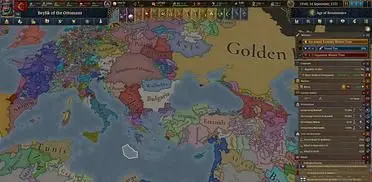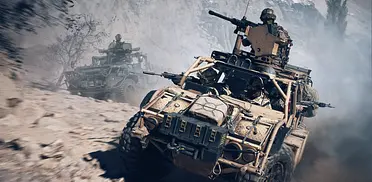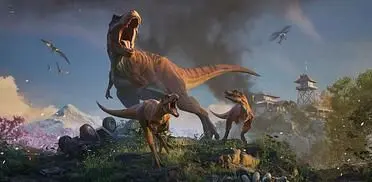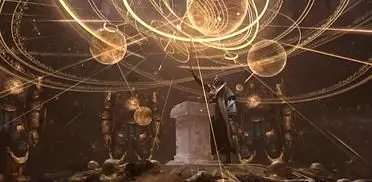It’s not often that a simple announcement about a publisher acquiring the rights to make games based on another company’s I.P. sends the internet into a universal proclamation of joy, but that’s what happened on Thursday 7th December, when Sega revealed that it had secured the license to make video games set in Games Workshop’s Warhammer fantasy universe - and that Total War studio Creative Assembly would be developing those titles.
One reason for the ensuing nerdgasm is understandable: Total War has over the last decade become one of the most critically acclaimed and iconic PC-only gaming franchises, and Creative Assembly one of the most respected development studios in the business. For the other reasons, though, we need to look back at the long and often tortuous history of Warhammer and video gaming.
The world of Warhammer first burst into view in 1983 as the setting for Games Workshop’s new tabletop wargame Warhammer Fantasy Battle. Previously primarily an importer of U.S. tabletop and role playing games from the likes of TSR and Chaosium, Games Workshop’s decision to branch out into its own I.P. soon reaped dividends, helped by their ownership of in-house magazine White Dwarf and miniatures manufacturer Citadel.
It was the release of Warhammer Fantasy Roleplay in 1986, though, that really put the setting front and centre. Warhammer’s world mixed the classic fantasy elements of Tolkien’s Middle Earth with a strong Renaissance-era Germany influence. The themes of Law and Chaos from the works of Michael Moorcock - to whom Fantasy Battle had been dedicated to - as well as a particularly British strain of surrealism and black comedy made it a compelling and distinctive world, and hugely influential on the young minds of many who would go on to work in the video games industry.
It helped that Warhammer’s art was stunning. Skulls and gothic architecture were everywhere, warriors were bedecked in absurdly large weaponry and shoulder armour, while Citadel’s sculptors went to town, creating a vast menagerie of races and monsters ready to be coated in paint by those with a steady hand.
By the turn of the ‘90s, Warhammer’s fictional setting had been fleshed out by innumerable campaign modules, White Dwarf articles and short fiction, and ever since novels, comics and more have added to one of the most memorable fantasy worlds ever created. Along with its highly developed gameplay mechanics, Warhammer should have been ideal fodder for a successful cross-over into the world of video games. But it never quite worked out that way.
Not that it took Warhammer long to make the jump. 1991’s HeroQuest and follow-up HeroQuest II: Legacy of Sorasil were pleasant enough isometric RPGs for the Amiga, but they were based on the licensed Milton Bradley adventure board game of the same name rather than the full-fat Warhammer experience. It would take another four years for a true Warhammer game to be attempted.
The result was Warhammer: Shadow of the Horned Rat for PC (and - bizarrely - the PlayStation) from developer Mindscape. Basing itself on the actual Fantasy Battle ruleset and featuring skirmishing on both a squad and squadron level, Shadow of the Horned Rat offered a wide variety of mission choices and paths to take through its storyline, as mercenary commander Morgan Bernhardt tried to foil the plans of the verminous Skaven.
The game certainly captured the feel of the tabletop Warhammer, and it and follow-up Dark Omen are fondly remembered today, despite a difficulty level that could kindly be referred to as “bloody hard”, as non-replaceable troops feel by the wayside and gold earned from battle was never quite enough to cover those losses with adequate replacements. Still, it seemed as if Mindscape had cracked the Warhammer video game formula with its real-time strategy gameplay, and a long line of titles based on the franchise would ensue.
Except that the Warhammer fantasy setting promptly disappeared from video gaming view for eight years.
When it did return, it was under the auspices of Namco Bandai, who - putting the PSP card game conversion Battle for Atluma to one side - attempted to resurrect the franchise as a strategy game with 2006’s Mark of Chaos for PC, with expansion follow-up Battle March also making its way on to the Xbox 360.
Though it still has its defenders, in the eyes of many Mark of Chaos, well, missed the mark, its graphical flourishes undermined by rather basic animations, and its highly linear single-player campaign marred by a lack of any true tactical depth. Namco didn’t help themselves with a marketing campaign that promised Warhammer fans a faithful conversion of the tabletop game they knew and loved - only to drop most of the gameplay elements that mattered.
Nor did it help that in the meantime Warhammer’s futuristic sister universe was getting stellar treatment. Seasoned RTS developer Relic produced the stunning Warhammer 40,000: Dawn of War in 2004, following it up with an excellent sequel in 2009, as well as a wide variety of expansion packs for both. Although 40K’s emphasis on smaller scale battles than its fantasy brethren suited Relic’s focus on squad-based tactics to the tee, Dawn of War still showed what was possible when a talented developer combined a masterly grasp of the strategy genre with a deep love for the lore of the fictional universe.
Not that Warhammer’s fantasy setting hadn’t played a big part in PC games throughout the 2000s - it just hadn’t done it under its own name. Blizzard Entertainment were undoubtedly big fans of Games Workshop’s output, and paid copious, ahem, “homage” to Warhammer, first with the RTS franchise WarCraft and then the MMO monster that was World of WarCraft. At a time when massively multiplayer games appeared to be a license to print money in the wake of WoW, EA clearly thought that going back to the source would be a smart move, the result being the 2008 MMO Warhammer Online: Age of Reckoning.
Despite strong initial sales and favourable reviews, Warhammer Online released into a market that was already over-saturated with fantasy MMOs, all of whom were having to deal with the fact that there was a ten-ton gorilla in the room with upwards of 10 million subscribers. The game’s own subscriber total collapsed alarmingly, halving in just six months after release, and contributed to EA reporting a loss of $1.08 billion dollars that financial year. The game limps on on a F2P basis with a handful of servers, but apart from a spin-off battle arena game Wrath of Heroes, EA appear to have washed their hands of the Warhammer I.P.
Which is where Creative Assembly come in. It’s too early to say exactly what their plans are for what remains a wonderfully fleshed-out yet sorely under-used fantasy universe, not least because no game is likely to even be in development yet. The fans’ fantasy may be to finally see an accurate and faithful rendition in video game form of the tabletop game - now in its eighth edition - but as Games Workshop’s current strategy is to sell increasingly high-priced products to a niche wargaming market, the creators of Warhammer are unlikely to embrace such any move on Sega’s part that could undercut that.
And while the announcement made clear that it was not the Total War team themselves - still busy on Rome 2 - but a specially created development outfit who would be handling the Warhammer franchise, it’s hard not to close your eyes, picture that series’ epic blend of turn-based grand strategy and mass army engagements and reskin the combatants with Orcish square jaws and Skaven-like snouts. Total Warhammer? Oh yes please.







